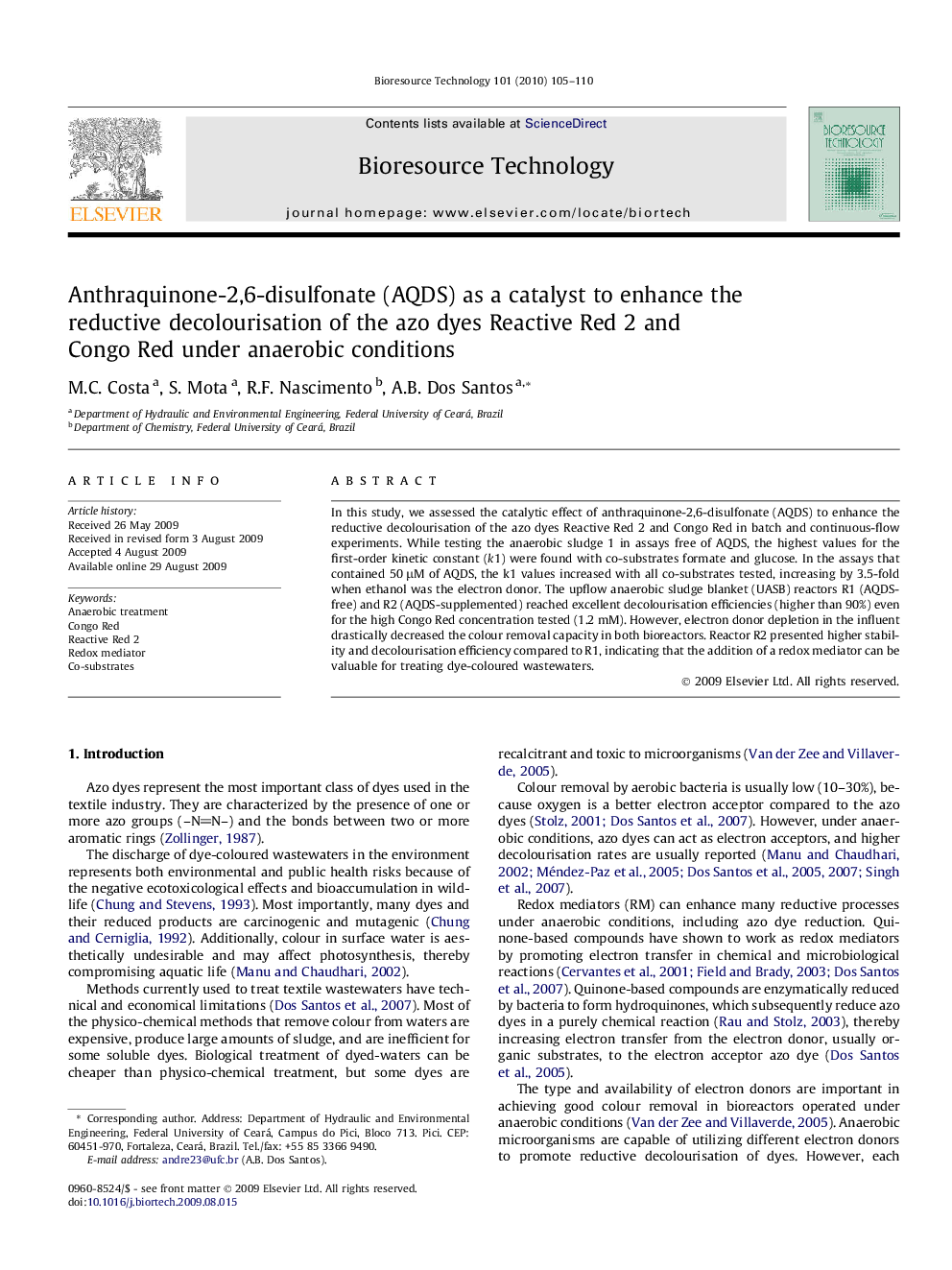| Article ID | Journal | Published Year | Pages | File Type |
|---|---|---|---|---|
| 683082 | Bioresource Technology | 2010 | 6 Pages |
In this study, we assessed the catalytic effect of anthraquinone-2,6-disulfonate (AQDS) to enhance the reductive decolourisation of the azo dyes Reactive Red 2 and Congo Red in batch and continuous-flow experiments. While testing the anaerobic sludge 1 in assays free of AQDS, the highest values for the first-order kinetic constant (k1) were found with co-substrates formate and glucose. In the assays that contained 50 μM of AQDS, the k1 values increased with all co-substrates tested, increasing by 3.5-fold when ethanol was the electron donor. The upflow anaerobic sludge blanket (UASB) reactors R1 (AQDS-free) and R2 (AQDS-supplemented) reached excellent decolourisation efficiencies (higher than 90%) even for the high Congo Red concentration tested (1.2 mM). However, electron donor depletion in the influent drastically decreased the colour removal capacity in both bioreactors. Reactor R2 presented higher stability and decolourisation efficiency compared to R1, indicating that the addition of a redox mediator can be valuable for treating dye-coloured wastewaters.
